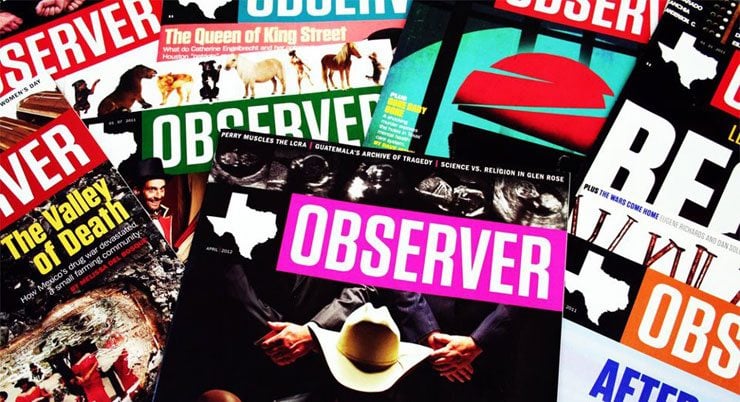
- Select a language for the TTS:
- UK English Female
- UK English Male
- US English Female
- US English Male
- Australian Female
- Australian Male
- Language selected: (auto detect) - EN
Play all audios:
LAUGHTER AND FORGETTINGS BY MICHAEL AGRESTA THE AGE OF SINATRA BY DAVID OHLE SOFT SKULL PRESS 168 PAGES, $11.95 he last time David Ohle published a novel, American troops were in Vietnam, J.
Edgar Hoover was alive, and Richard Nixon was up to his eyeballs working to keep the lid on Watergate. The year was 1972. The novel was _Motorman_, a fragmentary and reality-bending debut
that prompted William Burroughs to call Ohle an “American Beckett.” The book quickly went out of print and Ohle himself slipped off the radar of literary trend-watchers. But _Motorman_ was
not lost on serious fiction readers. For years stolen library copies and illegal photocopies were passed around, so that readers who had heard of the author’s original style could get a
taste of it for themselves. Now, after more than three decades in which seemingly everything and nothing in American society has changed, Ohle is back. Not only has _Motorman_ finally been
reprinted, but also a brand new novel, _The Age of Sinatra_, is out in bookstores. Its 168 pages, Ohle claims, represent 32 years of creative process. An episodic novel, _The Age of Sinatra
_is set in a world that is somewhat like our own, but imaginatively skewed and filled with unfamiliar elements. As readers we can never be sure how close our everyday reality is to Ohle’s
strange scenarios. The unsteadiness is deliberate, and for those willing to proceed with nothing solid to hold on to, it can be a wild ride. Ohle borrows from conventions of science fiction,
mythology, absurdist theater, and political satire to create a destabilizing para-reality: a world to which we expect to be able to relate, only to find that it is constantly surprising us
with characters and ideas that are both disorientingly foreign and piercingly familiar. Moldenke, Ohle’s protagonist, is a returning character from _Motorman_. Several of the fictional
cities—Texaco City, vaguely mirroring Houston, and New Oleo, suggesting New Orleans—also appear in the earlier book. But the world that Moldenke encounters in _The Age of Sinatra_ is clearly
something new. He must adapt to a political system run by the brilliant and crazy quasi-Fascist Michael Ratt, whose campaign slogan is “When you’re Ratt, you can’t be wrong.” Moldenke also
must face up to the unexplained Great Forgettings, periodic phenomena that wipe clean the memories of all citizens. There are rumors that President Ratt himself causes the Great Forgettings,
but Moldenke has no way of knowing, and _The Age of Sinatra_ is not the sort of book where characters understand more about the world at the end of it than they do at the beginning.
Instead, the lesson that both Moldenke and readers must internalize has more to do with the nature of reality and our relationship to it. Moldenke is only able to escape the sometimes
paranoid and dystopian confines of his (and Ratt’s) reality by engaging with it creatively, setting out on a journey, and claiming autonomy—even if he doesn’t know enough about what’s going
on around him to understand the effects of his actions. The novel begins with a reference to the assassination of John F. Kennedy, or “President Kenny”: > _During the Age of Sinatra, just
prior to the Forgetting of ’64, > an excavation near New Oleo unearthed a casket that, when opened, > held a long- haired corpse encased in a wickerlike cage of overgrown >
fingernails. A metal name bracelet was found around the corpse’s > wrist, though rust and mold had obscured all but the middle name, > which was Arvey._ Although there are several
references to the Kennedy assassination, none of the characters are quite clear as to what happened. After the exhumation, events take a bizarre twist: Lee Harvey Oswald’s corpse is
worshipped by a messianic cult that hopes to reanimate its beloved “Arvey” through the latest scientific technology. Michael Ratt is among the most prominent Arvians. When reading about
Ratt, it’s impossible not to think about a real-life politician who has cemented the idea of the swaggering, winking, credulity-bending cowboy politician in the world’s imagination. Ohle
satirizes Ratt’s ideas about politics, but he also engages with them to the extent that they become sneakily appealing. Ratt’s _Manifesto_ is centered on the principle of all things in
balance, “with pain and pleasure in equal measure.” But this balance is taken to absurd extremes. Moldenke boards a pedal-bus and is told that, by direct order from Ratt, reading is
prohibited on the pedal-bus. Moldenke reads anyway, and he is punished. A few days later, he boards another pedal-bus and is told that Ratt has just declared reading on the pedal-bus to be
mandatory. Again, Moldenke is caught on the wrong side of the law. Ratt’s laws are so absurd that they cannot be taken seriously as a coherent system—but therein lies his political genius.
He believes it to be his duty to structure reality for his subjects, but he does it in such a way that the absurdity of his authority is consistently reinforced to those who must submit to
it. The protagonist’s mother, Agnes Moldenke, is an entrepreneur who invented edible money. “Children who play with modeling clay grow up to be tycoons,” she tells her son. “Art is a
manipulation of a medium, any medium. Business is the manipulation of the medium of currency.” If politics is the manipulation of the medium of citizenry, then Ratt is an artist of
unprecedented scale. Ratt’s laws do not masquerade as universal moral imperatives; they are recognized as arbitrary and revered all the more because of their arbitrariness. Experiencing
Ratt’s world through Moldenke, we get a taste of a reality that may not be so much different from our own after all. native of New Orleans, Ohle worked for the for the Louisiana Department
of Health in the 1960s, testing fecal samples for salmonella and shigella. This truly disgusting blue-collar job might help explain why his fiction is so often fixated on the less exalted
elements of the human body. _The Age of Sinatra_ is full of creative extensions of human anatomy, including facial growths called flocculi, sub-human species called neutrodynes and Stinkers,
and “death eggs”—edible excretions made by neutrodynes as life leaves their bodies. After _Motorman_ was published, Ohle lived in Austin for several years and was one of a group of
experimental fiction writers teaching at the University of Texas. He later became Burroughs’ personal assistant, settled in Lawrence, Kansas, and taught at the University of Kansas, where he
continues to teach today. In 2002, Grove-Atlantic published _Cursed from Birth: The Short Unhappy Life of William S. Burroughs, Jr_., compiled and edited by Ohle. Considering the time
involved in the creation of _The Age of Sinatra_, it would be a mistake to place too much emphasis on its relevance to any specific historical moment, whether it be present day politics or
the assassination of Kennedy. In Ohle’s work, the whole notion of time, and especially of Great Forgettings, seems to recommend against historical allegory. If anything, Ohle demonstrates
how history is apt to circle back on itself, revealing patterns that have no real meaning beyond their own aesthetic charm. The slippery nature of his fiction conceals no hidden agenda, no
straightforward political critique. Instead, the slipperiness is _itself_ the critique. Ohle is teaching us—maybe “training” is a better word—to face up to the instability of the world we
live in and take an autonomous, creative stance toward it, to just jump into the abyss. Toward the end of the novel, one of the neutrodyne characters (what differentiates neutrodynes from
humans is never really made clear) explains the guiding philosophy of his species, Yogic, a “marriage of Logic and Yoga.” > _Art is the communication of feeling. Science is the
communication > of measure. Yogic is the communication of the intuitive leap. And > what is the intuitive leap? Even expecting tomorrow’s sun is such > a leap. This is both what
Yogic is about and what Yogic has nothing > at all to do with._ In his typical fashion, Ohle delivers what might be a central idea couched in satire—a satire of all-knowing wise men who
speak in riddles. Ohle will never step forward to tell us plainly what his books are about. In a sense, it’s even irresponsible of me as a reviewer to try to pin a stable meaning onto the
world of possibilities he has created. Tell 10 different people to read this book, and all 10 will say that it’s about something different. But judging by the response to Ohle’s first novel,
there is one reaction they are likely to have in common: They’ll want to read more. That wish might be granted—Ohle reports that he is at work on a third book set in Moldenke’s world,
tentatively titled _The Pisstown Chaos_. Here’s hoping that he can finish it sometime before 2035. _Michael Agresta is a prose writer and playwright in Austin. _





